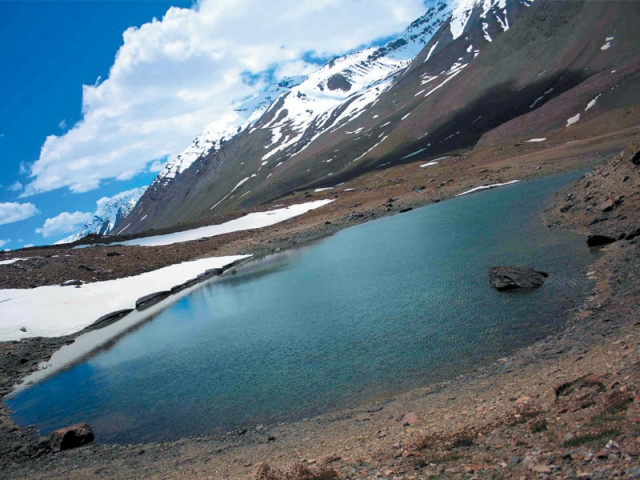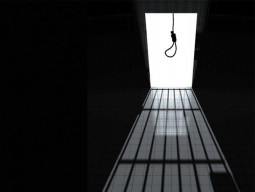
And right before travelling to the Baroghil Valley, located perilously close to that selfsame border, I was most certainly afraid. After all, the journey would take us almost right up to the Wakhan corridor, that narrow strip of Afghan land that separates Pakistan from Tajikistan. However, it took just one trip for my fear to be replaced by wonderment.
Having decided to brave it out, our little team headed for the two destinations that were on our itinerary: the 4,272-metre-high Qurumer Lake and the slightly shorter Darkot Mountain Pass (4,703m). The decision to make a go of it was one I did not regret for even a single moment of our admittedly treacherous journey.
We started our journey on a 4X4 jeep from Chitral, enduring two “epically uncomfortable” days in the rickety vehicle to get to Mastuj, on the outskirts of Baroghil. Our guide and other crew members joined us at Mastuj, from where we drove over to Ghazin to spend the night.
The next day, we set out for the Garam Chashma campsite to start our trek towards the “Throne Room of Lakes” — the Baroghil Valley itself. Its name is well deserved, as this is the site of more than 35 natural lakes, all in different colours, and at least five strategically important mountain passes.
The uninitiated may well imagine a desolate mountain wilderness, but the diversity of Baroghil is stunning. Towering mountain tracts stand guard over grassy plains, fairy meadows, peatlands and lakes. Its ecosystem is as diverse as the landscape, and Baroghil is home to many migratory birds, ibex, snow leopards (on the nearby peaks) and marmots — the last being the particular objects of my fancy. I just had to shoot them. With my camera, that is. Of course, that’s easier said than done, and the camera-shy marmots frustrated me to the point of irritation. Every time I would spot one of these ground squirrels, I would walk, run and crawl, just to get ready to take that perfect picture. But each time they would duck back into their multi-entranced burrows right when I fixed and pointed my lens towards them. But I refused to give up and eventually, thanks to my bulky 300mm lens which was often criticised by my team members due to its width and weight, I managed to get a few photographs of the marmots that are now my cherished mementos from the trip.
Our next destination was the much-awaited Qurumber Lake, at a distance of about 250 kilometres from Chitral. On the fifth day of our trip, after crossing Ishkarwaaz, Lashkarwaaz and Irgit Medaan, we finally reached the lake and promptly had our breath taken away. Qurumber is Pakistan’s second-highest lake, the pristine beauty of which defies description. The vastness of this lake can be gauged from the fact that even my vaunted wide-lens camera could not capture the entire lake in one frame! We stepped into the lake and it was as if we had purged our souls with the “holy water” of Qurumber. This impromptu baptism continued until the rapidly declining temperature and fast-blowing winds forced us back into our tents at dusk.
With one target checked off on our to-see list, we moved on to our next destination-cum-nightmare — the Darkot Pass. This pass is a connecting point between Chitral and Gilgit, and on its top you can see the lush green valley of Rawat and mountains piercing the sky without even so much as having to move your eyes from one point to another.
But before we got there, we saw something even more fascinating: the bewitching beauty of Chikaar. This region was like a colourful painting of snow clad peaks and lush green grassy plains with clouds hovering right overhead. That sight, which bordered on the unreal, will remain etched in our memories forever.
Then came the hard part: a tormenting hike of several hours over steep and rocky terrain, which eventually led us to the Darkot base camp. Tired as we were, our spirits were rejuvenated as we could now see the apex point of our whole expedition. The Darkot pass lay just ahead, beckoning to us and despite our fatigue we could not wait any longer to get to our goal.
Motivated by the closeness of our goal, our group, which included Daniyah Sehar — the first Pakistani woman to step onto the Darkot Pass — and our manager and leader Rahat Latif, all geared up to climb up the pass that very night. Mountain passes are always crossed this way, in the darkness of night, as the ice is then firm enough to walk on.
By the time we reached the top of the pass, the sun had just started spreading its rays. Peaks draped in snow began to blush crimson after the kiss of the dawn sunlight. It was a terrestrial paradise out of some ancient mythology, with the sky and the earth embracing each other at the horizon.
Basking in the glory of our achievement, we half-heartedly decided to make our way down. And on our way we realised just how quick we had been to judge the upwards hike which, in comparison to the nerve-wracking descent, was almost gentle. Hovering at the edge of exhaustion, we pushed through and finally reached the centre of Rawat Valley where our jeep picked us up to take us to Gupis Valley and from there to Chitral.
Published in The Express Tribune, Sunday Magazine, September 9th, 2012.


















COMMENTS
Comments are moderated and generally will be posted if they are on-topic and not abusive.
For more information, please see our Comments FAQ